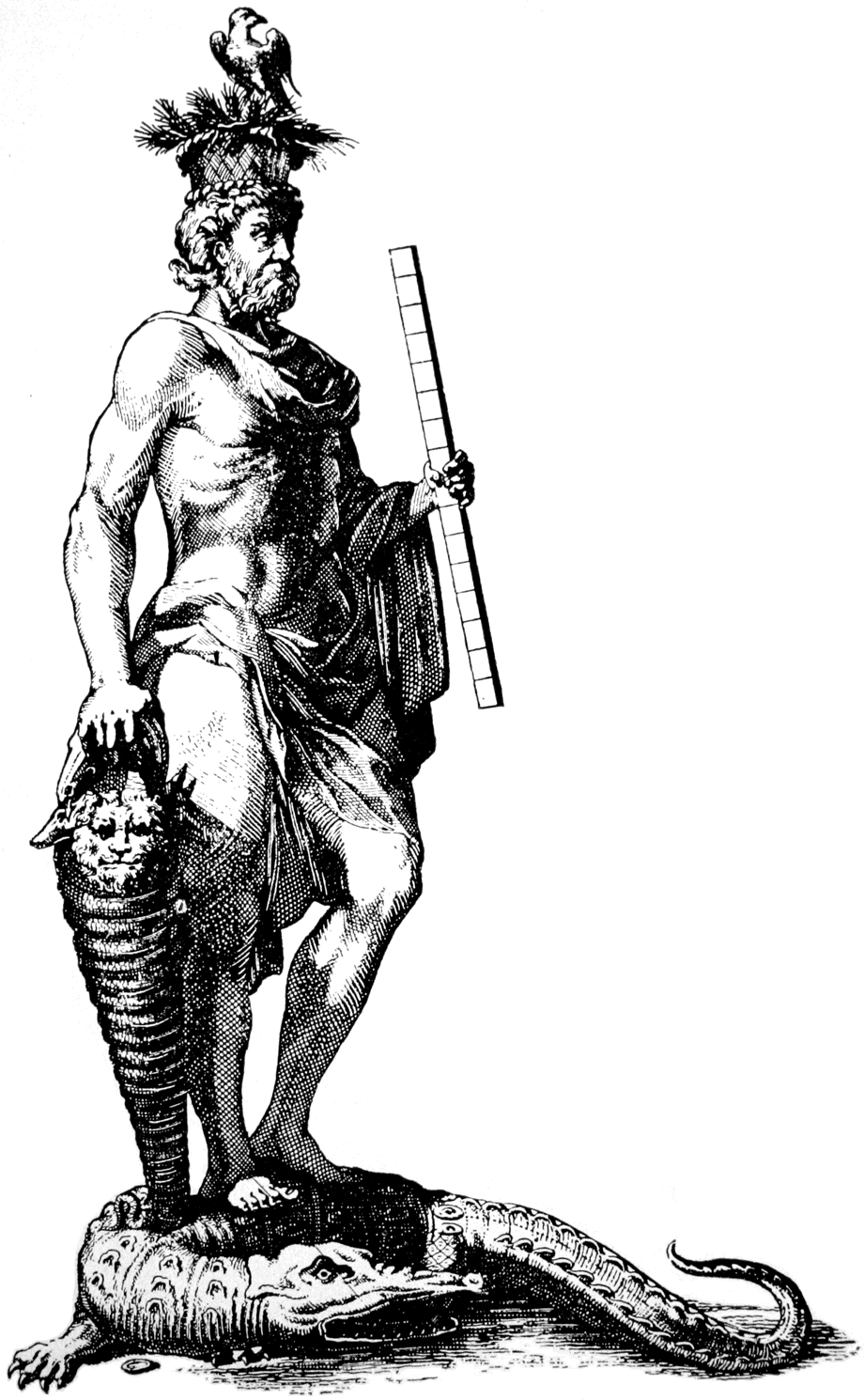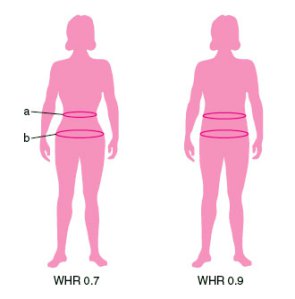|
Ruler
A ruler, sometimes called a rule, line gauge, or scale, is an instrument used to make distance measurements whereby a user estimates a distance by reading from a series of markings called "rules" along an edge of the device. Commonly the instrument is rigid and the edge itself is straightedge (a "ruled straightedge") which additionally allows one to draw straight lines. Some rulers such as cloth or paper tape measures are non-rigid. Specialty rulers exist that have flexible edges that retain a chosen shape and these find use in sewing, arts, and crafts. Rulers have been used since ancient times. They are commonly made from metal, wood, fabric, paper, and plastic. They are crucially important in the design and construction of buildings. Their ability to quickly and easily measure lengths makes them important to textile industry and to retailers where amounts of string, fabric, and paper goods can be cut to size. Children learn basic use of rulers at the elementary school leve ... [...More Info...] [...Related Items...] OR: [Wikipedia] [Google] [Baidu] |
Measuring Rod
A measuring rod is a tool used to physically measure lengths and survey areas of various sizes. Most measuring rods are round or square sectioned; however, they can also be flat boards. Some have markings at regular intervals. It is likely that the measuring rod was used before the line, chain or steel tapes used in modern measurement. History Ancient Sumer The oldest preserved measuring rod is a copper-alloy bar which was found by the German Assyriologist Eckhard Unger while excavating at Nippur (pictured below). The bar dates from c. 2650 BC. and Unger claimed it was used as a measurement standard. This irregularly formed and irregularly marked ''graduated rule'' supposedly defined the ''Sumerian cubit'' as about , although this does not agree with other evidence from the statues of Gudea from the same region, five centuries later. Ancient India Rulers made from ivory were in use by the Indus Valley Civilization in what today is Pakistan, and in some parts of Western Indi ... [...More Info...] [...Related Items...] OR: [Wikipedia] [Google] [Baidu] |
Cubit
The cubit is an ancient unit of length based on the distance from the elbow to the tip of the middle finger. It was primarily associated with the Sumerians, Egyptians, and Israelites. The term ''cubit'' is found in the Bible regarding Noah's Ark, Ark of the Covenant, Tabernacle, Solomon's Temple Solomon's Temple, also known as the First Temple (, , ), was the Temple in Jerusalem between the 10th century BC and . According to the Hebrew Bible, it was commissioned by Solomon in the United Kingdom of Israel before being inherited by th .... The ''common cubit'' was divided into 6 palms × 4 Finger (unit), fingers = 24 digit (unit), digits. ''Royal cubits'' added a palm for 7 palms × 4 fingers = 28 digits. These lengths typically ranged from , with an ancient Roman cubit being as long as . Cubits of various lengths were employed in many parts of the world in ancient history, antiquity, during the Middle Ages and as recently as Early modern Europe, early modern time ... [...More Info...] [...Related Items...] OR: [Wikipedia] [Google] [Baidu] |
History Of Measurement
The earliest recorded systems of weights and measures originate in the 3rd or 4th millennium BC. Even the very earliest civilizations needed measurement for purposes of agriculture, construction and trade. Early standard units might only have applied to a single community or small region, with every area developing its own standards for lengths, areas, volumes and masses. Often such systems were closely tied to one field of use, so that volume measures used, for example, for dry grains were unrelated to those for liquids, with neither bearing any particular relationship to units of length used for measuring cloth or land. With development of manufacturing technologies, and the growing importance of trade between communities and ultimately across the Earth, standardized weights and measures became critical. Starting in the 18th century, modernized, simplified and uniform systems of weights and measures were developed, with the fundamental units defined by ever more precise methods ... [...More Info...] [...Related Items...] OR: [Wikipedia] [Google] [Baidu] |
Nippur Cubit
Nippur ( Sumerian: ''Nibru'', often logographically recorded as , EN.LÍLKI, "Enlil City;"The Cambridge Ancient History: Prolegomena & Prehistory': Vol. 1, Part 1. Accessed 15 Dec 2010. Akkadian: ''Nibbur'') was an ancient Sumerian city. It was the special seat of the worship of the Sumerian god Enlil, the "Lord Wind", ruler of the cosmos, subject to An alone. Nippur was located in modern Nuffar in Afak, Al-Qādisiyyah Governorate, Iraq (roughly 200 km south of Baghdad). Occupation at the site extended back to the Uruk period, the Ubaid period, and the Jemdet Nasr period. History Nippur never enjoyed political hegemony in its own right, but its control was crucial, as it was considered capable of conferring the overall "kingship" on monarchs from other city-states. It was distinctively a sacred city, important from the possession of the famous Ekur temple of Enlil. Ninurta also had his main cult center, the E-shumesha temple, in the city-state. According to the ''Tummal Ch ... [...More Info...] [...Related Items...] OR: [Wikipedia] [Google] [Baidu] |
Angle Trisection
Angle trisection is a classical problem of straightedge and compass construction of ancient Greek mathematics. It concerns construction of an angle equal to one third of a given arbitrary angle, using only two tools: an unmarked straightedge and a compass. Pierre Wantzel proved in 1837 that the problem, as stated, is impossible to solve for arbitrary angles. However, although there is no way to trisect an angle ''in general'' with just a compass and a straightedge, some special angles can be trisected. For example, it is relatively straightforward to trisect a right angle (that is, to construct an angle of measure 30 degrees). It is possible to trisect an arbitrary angle by using tools other than straightedge and compass. For example, neusis construction, also known to ancient Greeks, involves simultaneous sliding and rotation of a marked straightedge, which cannot be achieved with the original tools. Other techniques were developed by mathematicians over the centuries. Becaus ... [...More Info...] [...Related Items...] OR: [Wikipedia] [Google] [Baidu] |
Compass And Straightedge
In geometry, straightedge-and-compass construction – also known as ruler-and-compass construction, Euclidean construction, or classical construction – is the construction of lengths, angles, and other geometric figures using only an idealized ruler and a pair of compasses. The idealized ruler, known as a straightedge, is assumed to be infinite in length, have only one edge, and no markings on it. The compass is assumed to have no maximum or minimum radius, and is assumed to "collapse" when lifted from the page, so may not be directly used to transfer distances. (This is an unimportant restriction since, using a multi-step procedure, a distance can be transferred even with a collapsing compass; see compass equivalence theorem. Note however that whilst a non-collapsing compass held against a straightedge might seem to be equivalent to marking it, the neusis construction is still impermissible and this is what unmarked really means: see Markable rulers below.) More formally, ... [...More Info...] [...Related Items...] OR: [Wikipedia] [Google] [Baidu] |
Waist
The waist is the part of the abdomen between the rib cage and hips. On people with slim bodies, the waist is the narrowest part of the torso. ''Waistline'' refers to the horizontal line where the waist is narrowest, or to the general appearance of the waist. Structure Because of this and because the waist is often synonymous with the stomach, one can become confused as to the exact location of the waist. Another confusing factor is that the waistline differs on different people. A study showed that self-reported measurements as opposed to measurement done by a technician, underestimated waist circumference and this underestimation increased with increased body size. In the study, waist circumference measured at the level of the umbilicus was larger than that measured at the natural waist. To locate the natural waistline, one need simply stand upright and then tilt over to the side keeping the legs and hips straight. Where the torso creases is the natural waistline. Waist me ... [...More Info...] [...Related Items...] OR: [Wikipedia] [Google] [Baidu] |
Point (typography)
In typography, the point is the smallest unit of measure. It is used for measuring font size, leading, and other items on a printed page. The size of the point has varied throughout printing's history. Since the 18th century, the size of a point has been between 0.18 and 0.4 millimeters. Following the advent of desktop publishing in the 1980s and 1990s, digital printing has largely supplanted the letterpress printing and has established the DTP point (DeskTop Publishing point) as the ''de facto'' standard. The DTP point is defined as of an international inch () and, as with earlier American point sizes, is considered to be of a pica. In metal type, the point size of the font describes the height of the metal body on which the typeface's characters were cast. In digital type, letters of a font are designed around an imaginary space called an '' em square''. When a point size of a font is specified, the font is scaled so that its em square has a side length of that parti ... [...More Info...] [...Related Items...] OR: [Wikipedia] [Google] [Baidu] |
Pica (typography)
The pica is a typographic unit of measure corresponding to approximately of an inch, or from to of a foot. One pica is further divided into 12 points. In printing, three pica measures are used: * The French pica of 12 Didot points (also called cicero) generally is: 12 × 0.376 = . * The American pica of . It was established by the United States Type Founders' Association in 1886. In TeX one pica is of an inch. * The contemporary computer PostScript pica is exactly of an inch or of a foot, i.e. 4.2 mm or 0.1 in. Publishing applications such as Adobe InDesign and QuarkXPress represent pica measurements with whole-number picas left of a lower-case ''p'', followed by the points number, for example: 5p6 represents 5 picas and 6 points, or 5 picas. Cascading Style Sheets (CSS) defined by the World Wide Web Consortium use pc as the abbreviation for pica ( of an inch), and pt for point ( of an inch). The pica is also used in measuring the font capacity and is applied in the pro ... [...More Info...] [...Related Items...] OR: [Wikipedia] [Google] [Baidu] |
Agate (typography)
An agate ( US) or ruby ( UK) is a unit of typographical measure. It is 5.5 typographical points, or about inch (1.94 mm). It can refer either to the height of a line of type or to a font that is 5.5 points. An is commonly used to display statistical data or legal notices in newspapers. It is considered to be the smallest point size that can be printed on newsprint and remain legible. Due to the small size of agate compared to typical newspaper body text that might be 8 to 10 points and due to its use for statistical, stock, racing or other table uses, the term "agate" may also refer to tables and texts using this point size. The general description "agate" refers to the collection of miscellaneous tables, stock tables, horse racing and sports tables and so forth that may be in a newspaper. From the ''American Dictionary of Printing and Bookmaking'' (1894): See also * Traditional point-size names Fonts originally consisted of a set of moveable type letterpunches pur ... [...More Info...] [...Related Items...] OR: [Wikipedia] [Google] [Baidu] |







